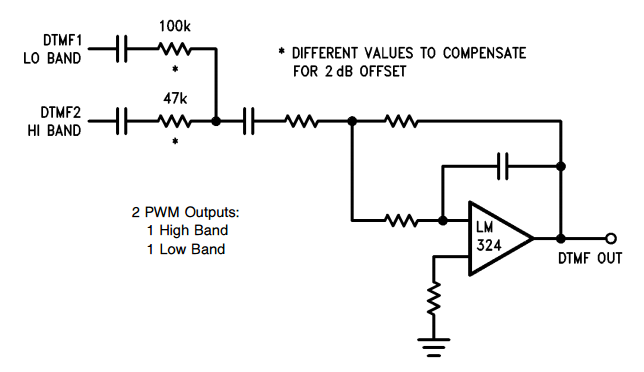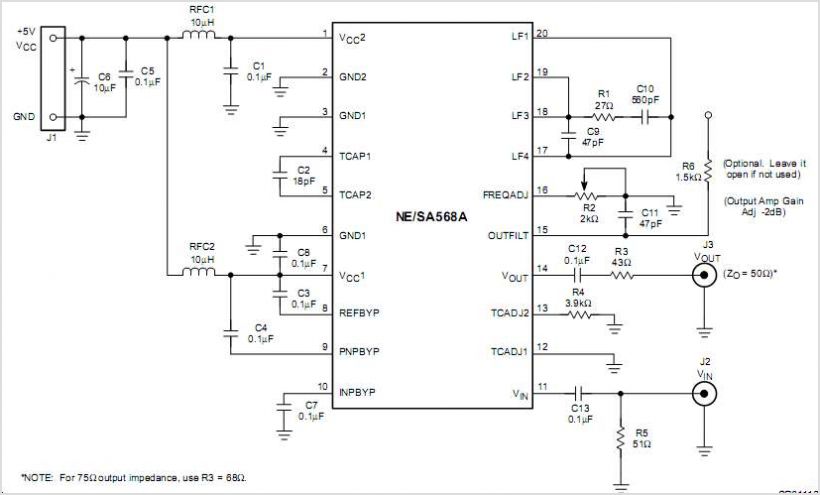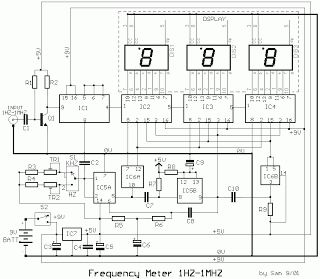
DTMF Generation with a 3.58 MHz Crystal

DTMF (Dual Tone Multiple Frequency) is associated with digital telephony, and provides two selected output frequencies (one high band, one low band) for a duration of 100 ms. DTMF generation consists of selecting and combining two audio tone frequencies associated with the rows (low band frequency) and columns (high band frequency) of a pushbutton touch tone telephone keypad.
Additional Content: The DTMF system is an integral part of modern telecommunication systems, facilitating the transmission of numerical data through audio signals. Each DTMF signal or 'tone' represents a unique combination of two frequencies - one from a high-frequency band and one from a low-frequency band. This dual frequency system allows for a total of 16 different signals, corresponding to the 16 different keys on a standard touch-tone telephone keypad.
The DTMF system operates by generating a specific tone for a duration of 100 milliseconds each time a key is pressed on the keypad. This tone is a combination of two distinct frequencies, with the low-frequency band representing the row of the key and the high-frequency band representing the column.
For instance, pressing the '1' key generates a tone comprising a low band frequency of 697 Hz (representing the first row) and a high band frequency of 1209 Hz (representing the first column). Similarly, pressing the '0' key generates a tone of 941 Hz and 1336 Hz, representing the fourth row and second column respectively.
In the context of electronic circuit design, a DTMF generator circuit would typically include an oscillator to generate the required frequencies, a mixer to combine the two frequencies into a single tone, and a timer to control the duration of the tone. The circuit would also need to be interfaced with the telephone keypad to detect key presses and generate the corresponding DTMF signal.
Overall, the DTMF system is a simple yet effective method for transmitting numerical data through audio signals, and is a key component of many digital telecommunication systems.DTMF (Dual Tone Multiple Frequency) is associated with digital telephony, and provides two selected output frequencies (one high band, one low band) for a duration of 100 ms. DTMF generation consists of selecting and combining two audio tone frequencies associated with the rows (low band frequency) and columns (high band frequency) of a pushbutton touch tone telephone keypad.
🔗 External reference
Additional Content: The DTMF system is an integral part of modern telecommunication systems, facilitating the transmission of numerical data through audio signals. Each DTMF signal or 'tone' represents a unique combination of two frequencies - one from a high-frequency band and one from a low-frequency band. This dual frequency system allows for a total of 16 different signals, corresponding to the 16 different keys on a standard touch-tone telephone keypad.
The DTMF system operates by generating a specific tone for a duration of 100 milliseconds each time a key is pressed on the keypad. This tone is a combination of two distinct frequencies, with the low-frequency band representing the row of the key and the high-frequency band representing the column.
For instance, pressing the '1' key generates a tone comprising a low band frequency of 697 Hz (representing the first row) and a high band frequency of 1209 Hz (representing the first column). Similarly, pressing the '0' key generates a tone of 941 Hz and 1336 Hz, representing the fourth row and second column respectively.
In the context of electronic circuit design, a DTMF generator circuit would typically include an oscillator to generate the required frequencies, a mixer to combine the two frequencies into a single tone, and a timer to control the duration of the tone. The circuit would also need to be interfaced with the telephone keypad to detect key presses and generate the corresponding DTMF signal.
Overall, the DTMF system is a simple yet effective method for transmitting numerical data through audio signals, and is a key component of many digital telecommunication systems.DTMF (Dual Tone Multiple Frequency) is associated with digital telephony, and provides two selected output frequencies (one high band, one low band) for a duration of 100 ms. DTMF generation consists of selecting and combining two audio tone frequencies associated with the rows (low band frequency) and columns (high band frequency) of a pushbutton touch tone telephone keypad.
🔗 External reference





